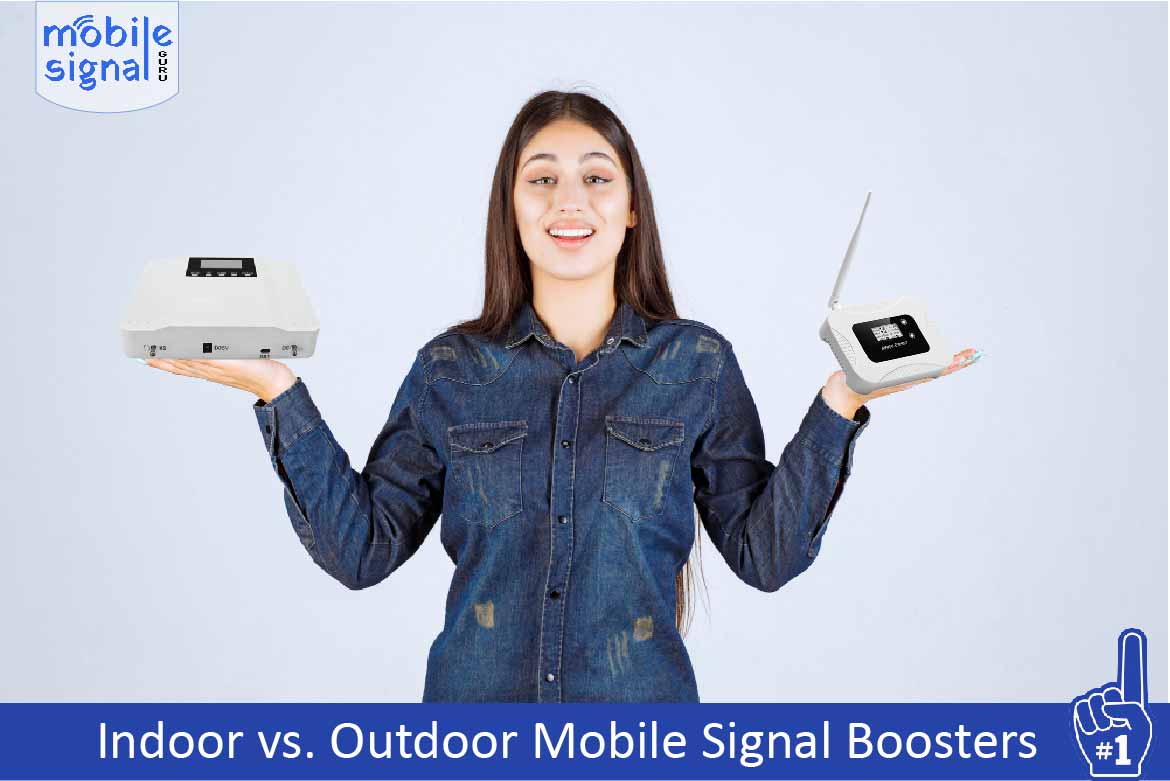We live in a world of connection, internet, and social media, and to access all these a reliable mobile signal is essential. We rely on our phones for communication, work, and entertainment. But, weak signals can disrupt this. Mobile signal boosters offer a solution by enhancing signal strength. However, choosing between indoor and outdoor mobile signal boosters can be confusing. Let’s break down the differences to help you decide which is better.
What is a Mobile Signal Booster?
A mobile signal booster amplifies weak signals to improve call quality and internet speed. It consists of an external antenna, an amplifier, and an internal antenna. The external antenna captures the weak signal, the amplifier boosts it, and the internal antenna rebroadcasts the stronger signal within a specific area.
Understanding Indoor Signal Boosters
Indoor signal boosters are designed to enhance signal strength within buildings. They are ideal for homes, offices, and other indoor spaces. These boosters are easy to install, usually requiring only a few steps to set up.
Advantages of Indoor Signal Boosters
- Simple Installation: Most indoor boosters are plug-and-play. This makes them easy to set up without professional help.
- Portable: You can move indoor boosters from room to room as needed.
- Safe from Weather Conditions: Indoor boosters are not exposed to harsh weather, reducing the risk of damage.
- Cost-Effective: Indoor boosters are generally more affordable compared to outdoor ones.
Disadvantages of Indoor Signal Boosters
- Limited Range: They cover a smaller area, which may not be sufficient for large buildings.
- Dependent on Building Structure: Thick walls and metal objects can interfere with the signal, reducing effectiveness.
Understanding Outdoor Signal Boosters
Outdoor signal boosters are installed outside, typically on rooftops or poles. These boosters are more powerful and are often used in rural areas or large buildings. They are designed to capture signals from far-off cell towers, which makes them ideal for areas with very weak signals.
Advantages of Outdoor Signal Boosters
- Stronger Signal Reception: Outdoor boosters can capture signals from distant towers, providing a stronger boost.
- Wider Coverage Area: They can cover larger areas, making them suitable for big homes or offices.
- Effective in Rural Areas: Outdoor boosters are perfect for areas with poor reception, such as rural or mountainous regions.
Disadvantages of Outdoor Signal Boosters
- Complex Installation: Installing an outdoor booster may require professional help, especially for positioning the antenna.
- Exposure to Weather: The external antenna is exposed to weather conditions, which can lead to wear and tear over time.
- Higher Cost: Outdoor boosters are usually more expensive due to their power and coverage capabilities.
Which One is Better?
The choice between indoor and outdoor signal boosters depends on your specific needs.
- For Small Homes or Apartments: An indoor booster is often sufficient. It’s easy to install and affordable, providing enough coverage for small spaces.
- For Large Buildings or Rural Areas: An outdoor booster is the better option. It offers stronger signal reception and wider coverage, making it ideal for challenging environments.
Comparison Table
| Feature | Indoor Signal Booster | Outdoor Signal Booster |
|---|---|---|
| Installation | Easy, DIY | Complex, may require professional help |
| Coverage Area | Small to medium-sized spaces | Large buildings, outdoor areas |
| Signal Strength | Good for moderate signal improvement | Best for very weak signals |
| Weather Protection | Protected from weather | Exposed to weather |
| Cost | More affordable | Generally more expensive |
Key Considerations When Choosing a Booster
- Signal Strength: Assess the current signal strength in your area. If the outdoor signal is weak, an outdoor booster may be necessary.
- Coverage Area: Determine the size of the area you need to cover. Indoor boosters work well for small to medium spaces, while outdoor boosters are best for larger areas.
- Installation Requirements: Consider whether you want to handle installation yourself or if you’re willing to hire a professional.
- Budget: Indoor boosters are generally more budget-friendly, while outdoor boosters offer more power at a higher cost.
For information on how to measure your current mobile signal strength, check out our guide on measuring mobile signal strength.
Conclusion
Both indoor and outdoor mobile signal boosters have their advantages and drawbacks. If you live in a small space with decent outdoor signal, an indoor booster might be all you need. However, if you’re in a rural area or need coverage for a large space, an outdoor booster could be a better investment.
By understanding your specific needs and considering factors like signal strength, coverage area, and budget, you can choose the right booster to ensure you stay connected. Whether indoor or outdoor, a good signal booster can significantly enhance your mobile experience, ensuring clear calls and fast internet wherever you are.
Ready to boost your mobile signal? Explore our top-rated mobile signal boosters now, or contact our support team for personalized recommendations.
 Australia (AUD)
Australia (AUD) Denmark (DKK)
Denmark (DKK) France (EUR)
France (EUR) Germany (EUR)
Germany (EUR) Ireland (EUR)
Ireland (EUR) Malta (EUR)
Malta (EUR) Netherlands (EUR)
Netherlands (EUR) New Zealand (NZD)
New Zealand (NZD) Norway (NOK)
Norway (NOK) Spain (EUR)
Spain (EUR) Sweden (SEK)
Sweden (SEK) UAE (AED)
UAE (AED) United Kingdom (GBP)
United Kingdom (GBP)
